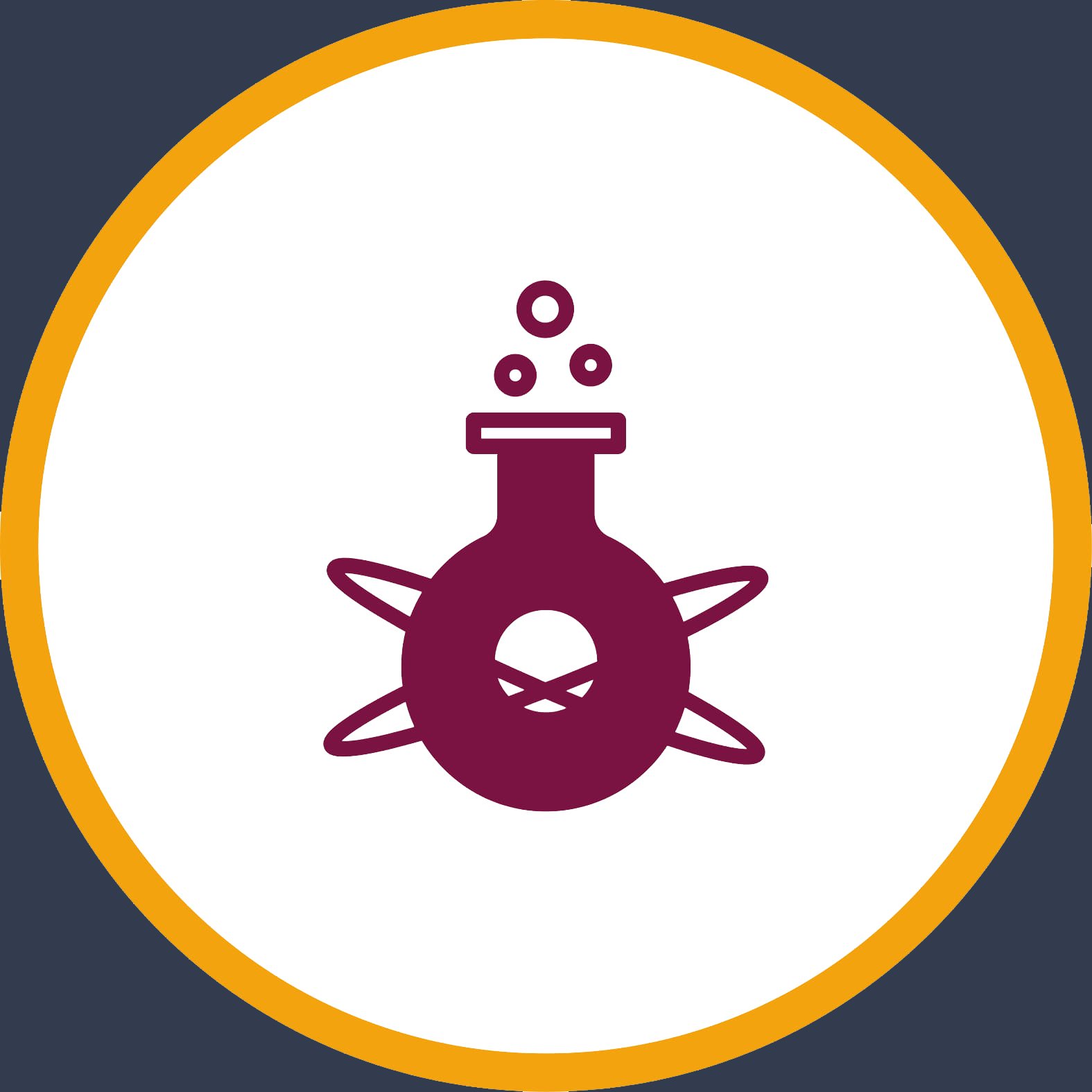First Semester
BIO 101 Principles of Zoology
An introduction to the study of animal life, Basic principles of biology is covered including the role of plants as primary producers of chemical energy. The mechanisms of digestion, circulation, osmoregulation, excretion, locomotion, nerve action and reproduction in representative animals are discussed. The chemical and cellular mechanisms involved in the transmission of inheritance are studied. The evolution of plant and animal life, the interaction of organisms in their environment, food chains and trophic levels, and ecological distributions are introduced. Representative animal phyla including both invertebrates and vertebrates are studied from the viewpoint of systematics and structural characters. This course is designed to provide the student with basic information and vocabulary in preparation for advanced courses in zoology and biology.
BIO 107 Principles of Botany
Principles of Botany is cover plant kingdoms, structure and function, life stages, populations and eco-types, flowers and plant reproduction, and will give the student a working vocabulary and understanding necessary for the remaining courses.
Second Semester
BIO 102 Systematic Zoology
An introduction to the principles and theory of systematic zoology and comparative biology including species concepts and speciation; methods for higher classification including phylogenetic systematics, phonetics, and evolutionary taxonomy; and an introduction to zoological nomenclature. Prerequisite: Graduate classification in entomology or other biological sciences. This course is designed to accommodate one semester of the General Education requirement for non-science majors at Tishk International University.
BIO 106 Systematic Botany
A taxonomic study of the flowering plants. This field course includes methods for the identification, appropriate collection, and preservation of plant specimens.
Third Semester
BIO 203 Plant Anatomy
The course begins with plant anatomy start different plant cells and plant tissues will be studied. After that the anatomy of different plant organs will be studied. Also, to provide students with skills necessary to section and stain fresh plant material in preparation for study of plant anatomy. To train students in the proper use of the compound light microscope and to give them experience in interpreting images that they see through the microscope in terms of how plant structure is related to function. In the beginning of the course the students also start long term experiments, which is continue for several weeks. These long term experiments demonstrate some of the plant physiology aspects regarding photosynthesis, transport and growth regulation. Additionally, this course lead to instill in students an appreciation for the complexity of tissue organization that exists within plant bodies that allow plants to develop and live as integrated organisms in diverse environments.
BIO 205 Invertebrates
Invertebrate Zoology is a course designed to Comparative study of invertebrates: taxonomy, structure, physiology, reproduction, evolution, and behavior of the animals which lack a backbone Describe common and distinctive features of invertebrate phyla, including poriferans, cnidarians, platyhelminthes, nematodes, molluscs, annelids, arthropods, and echinoderms. Discuss distinctive features of taxonomic classes within the phyla covered. Explain phylogenetic relationships between the phyla covered. Describe important concepts in invertebrate body structure and organization, including body symmetry, cephalization, body cavity, gut formation, segmentation. Describe important biological processes in invertebrates, including locomotion, body support, reproduction, development, feeding, digestion, excretion, osmoregulation, circulation, respiration, sensory perception, behavior. The laboratory section is series of showing and describing some models and hands-on dissections of the larger invertebrates, microscopic work on the smaller invertebrates, and observations of form, function, and behavior of live representatives. Group learning is stressed in the lab, with groups usually being composed of 3-4 students. This eases the amount of work for each individual student, and leads to a more interactive group in general.
BIO 207 Biochemistry
This course is intended to offer an introduction to the world of Biochemistry. The course deals with the structure, properties, and significance of the major groups of biochemical compounds (amino acids, proteins, carbohydrates, nucleic acids, lipids, and vitamins). Additionally, this course will work on related areas such as pH and buffers will also be discussed and typical procedures for investigation of these materials will be performed in the laboratory.
Fourth Semester
BIO 202 Entomology
Entomology provides an introduction to the science of insect biology. The course covers the diversity of insects, their biology and behavior, with a guide to basic insect taxonomy and a survey of the insect orders, selected topics in an identified area of entomology and it give information about evolutionary changes of insects. Integration of principles of animal and plant ecology with environmental factors to characterize wildlife populations. Intensive analysis of specific areas will emphasize either the development of a wildlife management plan or a general vertebrate natural history survey. Also during the lab time taxonomy and ecology of insects commonly encountered. Identification of all orders and many common families. Ecological attributes of each taxon, including food, habitat, life cycle, and behavior. An insect collection is required.
BIO 204 Plant Taxonomy
An introduction to the principles and practice of plant taxonomy. Emphasis is placed on acquiring the facility to use appropriate terminology in order to identify plants, as well as understanding the historical context and investigative procedures of taxonomists in designing a classification. Of particular importance is gaining an understanding of the philosophical bases in taxonomy and the relevance of this field to other areas of biology.
BIO 208 Biophysics
This course introduces the use of physical methods in the study of biological systems, including macromolecules, membranes, nerves, muscle, photosynthetic systems and visual systems. The biological systems to which the methods are applied will be surveyed and current interpretations of their structure and function will be discussed. The treatment of biological phenomena will be based on physical principles with appropriate mathematics when necessary. The emphasis will be on the applications of physics in biology and ecology.
Fifth Semester
BIO 307 General Microbiology
General microbiology is a course intended for the biology or science major interested in learning about the microbial world. In this introductory course students will study the fundamental structural and metabolic characteristics of microorganisms (mainly prokaryotes) and will learn basic techniques for enrichment, selection, isolation, enumeration and identification. In the course we will address not only the ability of microorganisms to cause disease, but also their role in research, their importance in functional ecosystems and their economic significance. In this course Bacteria are emphasized. Laboratories will not always coincide with the lecture topic, as the laboratories are designed to give the student the basic laboratory technique necessary to identify microorganisms.
BIO 305 Molecular Biology
This course Provide a strong background in the cellular and molecular aspects of biology with particular emphasis on eukaryotes. This course deals with nucleic acids and proteins and how these molecules interact within the cell to promote proper growth, division, and development. It is a large and ever-changing discipline. This course will emphasize the molecular mechanisms of DNA replication, repair, transcription, splicing, protein synthesis, and gene regulation in different organisms. This course takes an in-depth look at some rapidly evolving fields, including chromatin structure and function, genome editing techniques, back splicing, and regulation of gene expression by different types of RNAs.
BIO 311 Teaching Methods in Biology
This course is designed to give students practical experience in teaching biology at the high school level. Students are expected to demonstrate various teaching methods, learn to use scientific equipment, provide feedback to peers, and reflect on their own professional development as science teachers. The course integrates biology content knowledge and teaching skills, as described in the National and International Science Education Standards.
BIO 301 Histology
This course will give the microscopic study of tissues and the tissue organization of organs in relation to their function using light and electron microscopy. Tissue preparation for microscopic study, histochemistry, stains and stain technology will be included. Lecture and investigative based experimental activities are incorporated into this course. In the lab section students will see the tissues under the microscope in order to learn more about what they study.
BIO 303 Parasitology
In this interactive course, investigate the life cycles, modes of transmission and impact that parasites have on human populations around the world. Focus on parasites that are relevant to human health, including worms, amoeba and other macro parasites. Additionally, in the laboratory time student have opportunity to prepare their own slide and looking after the prepared slides.
Sixth Semester
BIO 305 Genetic
The purpose of this course is to provide an in-depth, background in all areas of classic Mendelian genetics, population and evolutionary genetics, and molecular genetics. Learn to integrate the most important concepts in classical and molecular genetics into an overall picture of what a gene is, how it functions, how it may be altered and how it is inherited. Study the molecular basis of gene function and mutation, Mendelian genetics, transmission systems, regulation of cellular processes, developmental genetics, cytoplasmic inheritance, population genetics and multifactorial inheritance. The final goal is for the student who successfully completes this course to be conversant in all of the areas of genetics and have sufficient basic knowledge to successfully move on and master advanced topics in genetics. This will be achieved by learning how geneticists solve problems and make new discoveries.
BIO 302 Mycology
Mycology is a writing intensive course. Subjects include fungal structure, function and physiology, reproduction, taxonomy, and the influence of fungi on human health and disease. Emphasis placed on medical mycology, plant fungal infections, including the production of pharmaceuticals and the impact of fungi in ecosystems as well as the elucidation of eukaryotic genetic principles, respiratory pathways and current research topics in mycology.
BIO 304 Pollution
Ecology is the study of interrelationships between organisms and their biotic and abiotic environments. As a basic science, ecology informs us about the processes governing the patterns we observe in nature. From an applied perspective, it is critical that we understand ecology as it provides insights and solutions to many of the environmental issues we are confronted with in our daily lives. In this course we will focus specifically on the ecology of plants. Within plant ecology there are many sub-disciplines; these sub-disciplines vary in the level of organization on which they are focused (e.g. physiological ecology, population biology, community and ecosystem ecology). We will touch on many of these areas over the course of the semester.
BIO 306 General Embriology
Study of major developmental stages and processes with an emphasis on vertebrate embryos. Topics include gametogenesis and early development in invertebrates and amphibians, formation of primary germ layers, and concepts of differentiation, tissue induction, and morphogenesis The patterns and principles of normal embryonic and fetal development of mammals are covered with an emphasis on comparison to adult anatomy and medical implications. In laboratories, the teratology of prenatal anomalies are also examined.
BIO 308 Immunology
Introduces the principles of immunology including: development of the immune system, innate immunity, immunoglobulin structure and genetics, antigen-antibody reactions, the major histocompatibility complex reactions and antigen presentation, T cell receptors (genetics, structure, selection), T cell activation and effector functions, energy and apoptosis, cytokines, phagocytic cell function, immune responses to infectious organisms and tumors, autoimmune diseases, autoimmunity, allergies, and immune deficiencies.
Seventh Semester
BIO 401 Principles of Animal Physiology
This course provides students with an understanding of how animals adapt physiologically to environmental challenges and addresses the basic physical and chemical principles that underlie physiological processes. Several biological systems are considered, including respiratory, circulatory, digestive and metabolic, thermoregulatory, osmoregulatory, renal, nervous, musculoskeletal, neural, hormonal, and sensory. The weekly laboratory session will complement the lecture, mainly by providing hands-on experience in observation, data collection, measurement, and problem-solving skills.
BIO 403 Comparative Anatomy of Chordates I
A study of the similarities of anatomy and phylogenetic relationships of major vertebrate groups. Learn the basic morphological features of representative chordate systems, learn the relationships between morphological features and their functions within representative chordates, explain the evolutionary basis of morphological differences and similarities among vertebrate taxa, critically analyze, synthesize, and evaluate diverse sets of information concerning vertebrate anatomy, be familiar with new developments in the field of comparative vertebrate anatomy, understand ways in which the study of comparative vertebrate anatomy impacts directly and indirectly on human society.
BIO 407 Principles of Plant Physiology
Plant physiology is the study of plant function. Emphasis will be placed on photosynthesis, secondary metabolism, transport of water and solutes, plant defense against pathogens and herbivores, mineral nutrition, and environmental and hormonal control of growth and development. Each process will be examined at the biochemical, cellular and organismal level so as to provide a more complete understanding of the process. Laboratory studies will expose students to both current and classical approaches used to study plant physiology.
Eighth Semester
BIO 402 Plant Growth and Development
Students in this course will focus on environmental and developmental processes of plant growth and development. A student completing this course should have an understanding on the development processes of plant growth, and how environmental factors interact to affect and control plant growth and development.
BIO 418 Research Project
The aim of the course is to give the students an opportunity to perform a research project within the field of biomedicine under supervision according to an individual study plan, to summarize the results in a research report and present the results of the project.
BIO 408 Biostatistics
This introductory course is designed to give students the basic skills to organize and summarize data, along with an introduction to the fundamental principles of statistical inference. The course emphasizes an understanding of statistical concepts and interpretation of numeric data summaries along with basic analysis methods, using examples and exercises from medical and public health studies. The course does not require a high-level mathematics background, and will highlight the use and integration of statistical software, spreadsheets and word processing software in conducting and presenting data summaries and analyses.
Technical Electives List
BIO 321 Phycology
An introduction to psychological terms, facts and principles designed to aid the student in understanding individual behavior. An introduction to psychological science and the study of behavior and mental processes. This course surveys the major subdisciplines of the field, including such topics as the brain and neuroscience, behavioral genetics, cognitive and social development, perception, learning, memory, decision-making, language, consciousness, emotions, motivation, psychological disorders, social identity, interpersonal interactions and cultural processes.
BIO 322 Human Anatomy
A study of the anatomical structure of the human body. Body structure will be studied by organ systems and will involve a balance between gross anatomical study and histology. Form-function relationships will be emphasized. The laboratory study will involve working with human skeletal collections and dissection of cadavers and preserved specimens.
BIO 323 Biogeography
Biogeography is the study of the spatial patterns of biological diversity and its causes, both in the present and in the past. Biogeographers synthesize information from a very broad range of fields, including ecology, evolution, paleontology, and climatology. This course will provide a historical background for the field of biogeography and the ecological foundations needed to understand the distribution and abundance of species and their changes over time. We will also explore the relevance of biogeography during a time of increasing human impact and climate changes.
BIO 324 Evolution
This course focuses on the processes of evolution and the patterns generated by these processes. Our aim is to develop a scientific way of thinking about biological diversity rather than attempting to memorize the history of living things. If you can acquire an evolutionary “way of thinking” about the tremendous diversity of life, you will probably remember more, and be equipped to discuss things more intelligently, than if we forced you to memorize dry facts about, say, gene frequencies or the fossil record. How can we account for the extinction of dinosaurs and the existence of mites that crawl around our eyelids? How on earth did some insects come to look so much like sticks? We will seek explanations for such patterns of diversity and for the apparent “good fit” of organisms to their environment. Topics covered include elementary population genetics, the theory of evolution by natural selection, concepts of fitness and adaptation, genetic and developmental bases of evolutionary change, modes of speciation, molecular evolution, and principles of systematic biology.
BIO 325 Iraq Flora and Fauna
This course is designed to take advantage of the teaching opportunities presented by the West Iraq highlands. The main advantage of using this area as an outdoor classroom derives from the fact that there are large changes in elevation and soils, and a tremendous variety of community types located in a small geographic area.
BIO 326 History of science
Introduction to major themes in the history of science. Investigation of historical and scientific methods through the study of particular historical cases.
BIO 327 Geology
This course covers the fundamentals of geology: Rocks, minerals, geologic time, plate tectonics, earthquakes, volcanoes, surface processes, and earth resources. The lab delves into the chemistry of minerals, how rocks form, geologic mapping with GPS, geology in the field, and other fundamental topics. Several field trips are taken each semester.
BIO 328 Ornithology
The biology of birds, including evolution, functional morphology, physiology, ecology and behavior. Field and museum laboratories emphasize particular aspects of morphology, ecology and behavior, as well as taxonomy and identification. One coastal weekend field trip required. Our goal for this course is to build a foundation of knowledge about birds in a way that will stimulate you to keep learning about them for the rest of your life. Our approach will be to focus primarily on the behavior and ecology of birds and the development of field skills. Lectures will amplify material from the text Ornithology, as well as outside readings and examples from the instructors’ personal research.
BIO 329 Archegoniate
Archegoniate course deals with the study of identifying the Archegoniate and its classification in the plantae kingdom. Then studying the Hepatophyta, Anthocerotophyta and Bryophyta. In addition to the Pteridophytes and Gymnosperms including all of their divisions.
BIO 330 Biotechnology
Genomic information content; database searches; pairwise and multiple sequence alignment; mutations and distance-based phylogenetic analysis; genomics and gene recognition; genetic polymorphisms and forensic applications; nucleic-acid and protein array analysis; structure prediction of biological macromolecules. Lectures are augmented with laboratory exercises and demonstrations. Introductory statistics and 2 semesters of calculus required.
BIO 421 Organic Chemistry
Fundamental concepts of nomenclature, formulae, preparation and properties of organic compounds. Modern electronic and molecular orbital theories are introduced. Laboratory experiments illustrate properties and preparation of organic compound.
BIO 422 Physics
This course provides a conceptually-based exposure to the fundamental principles and processes of the physical world. Topics include basic concepts of motion, forces, energy, heat, electricity, magnetism, and the structure of matter and the universe.
BIO 423 Medical Bacteria
Intended for liberal arts majors and students not majoring in the biological sciences. Focuses on activities of bacteria, viruses, and other microorganisms, and their influence on humans. Microbe-related topics include disease, bioterrorism, food, biotechnology, and ecology. Examines the nature of scientific inquiry, along with major biological concepts.
BIO 424 Cell biology
This course involves the study of individual cells and the organization in tissues and organ systems. Emphasis is on the correlation of structure and function at all levels of organization.
BIO 425 Health Education
Based on the ARCVIEW Geographic Information Systems (GIS), this course is a practical introduction to the use of computer mapping and spatial analysis. The course uses the most current GIS technology to understand the environment and how it impacts public health. There is a large computer lab component to the course.
BIO 426 Virology
This introductory virology course emphasizes the common reactions that must be completed by all viruses for successful reproduction within a host cell and survival and spread within a host population. Also give an introduction to modern medical virology, with an emphasis on structure, molecular biology, viral replication, mutations, and evolution of viruses, host cell interactions and pathogenesis, as well as diagnosis, control and prevention of infection.
BIO 427 Metabolism
The goal of Human Metabolism: Regulation and Disease is to provide students with an understanding of the principles of the interrelated pathways of human metabolism and the ability to apply those principles to discussion of the pathophysiology and the design of new therapies for human disease. The course combines lecture, self-study and weekly small group student-led discussions of contemporary literature relevant to the lecture topics.
BIO 428 Endocrinology
This course is designed to provide students with a broad understanding of vertebrate endocrinology. Course topics will include the various classes of hormones, sources and synthesis of hormones, receptors and target tissues, mechanisms of action and regulation, and methods used in endocrinology. Details of classical endocrine systems will be explored. Upon completion of this course students should be capable of understanding and critically evaluating literature on the topic.








